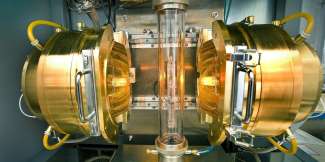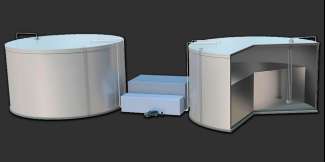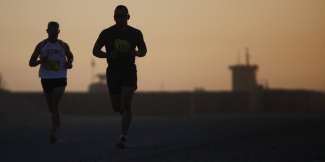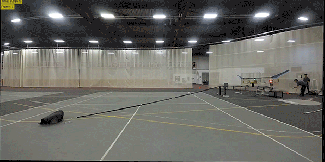Weekly recaps

Recap / Best of Last Week – Grape fireballs in microwave ovens, Japanese probe lands on asteroid and impact of salt on allergies
It was a good week for physics as a team at Tel Aviv University unveiled new imaging technology that captures the movement of quantum particles with unprecedented resolution—it allows for the exploration of the generation ...

Recap / Best of Last Week – NASA heading back to moon, climate shift in North America and impact of processed food on health
It was a big week for space science as NASA announced it would be heading back to the moon soon—this time, to stay. The agency has accelerated lunar plans, and administrator Jim Bridenstine suggested that it could happen ...

Recap / Best of Last Week – A warped Milky Way, the ocean to change color and the impact of marijuana on sperm count
It was a good week for space science as a team at the National Astronomical Observatories of the Chinese Academy of Sciences found that the Milky Way is warped—they report that our galaxy becomes increasingly twisted in ...

Recap / Best of Last Week – Translating brain waves into speech, the changing universe and alcohol's impact on DNA
It was a big week for technology science as a team of engineers at Columbia University translated brain signals directly into speech. The group was able to reconstruct words and run them through a speech synthesizer—a scientific ...

Recap / Best of Last Week: Collision that made life on Earth possible, flying car prototype and muscle memory not really so lost
It was a good week for space science as an international team of researchers reported on their efforts to reveal the black hole at the heart of the galaxy using an array of telescopes—they found that emissions from Sagittarius ...

Recap / Best of Last Week – Superconductivity at room temperature, growing cotton on the moon, food additives and anxiety
It was another good week for physics as a team at George Washington University discovered new evidence of superconductivity at near room temperature by squeezing and then heating minuscule samples of lanthanum and hydrogen. ...

Recap / Best of Last Week– Stabilizing fusion plasmas, privacy becomes a selling point and advantages of short bouts of exercise
It was a good week for physics as a team at the U.S. Department of Energy's Princeton Plasma Physics Laboratory discovered a process that stabilizes fusion plasmas by revisiting work from the 1980s that focused on using radio ...

Recap / Best of Last Week – Dark matter on the move, boosting crop growth and a possible way to live longer and stronger
It was another good week for physics as a team with members from the U.S., France and Japan recorded for the first time the "lifetime" of graphene qubits—they found a way to record the "temporal coherence" of a graphene ...

Recap / Best of Last Week: Reversing the climate clock, impact of screen time on children, and how red meat impacts gut bacteria
It was a good week for space news as NASA announced that the Voyager 2 space probe entered interstellar space—the event marked the second time that a human-made object has left the solar system. And an international team ...

Recap / Best of Last Week – Sun in a box, new dark matter theory and metabolism boost after exercise lasts longer than thought
It was a good week for technology as a team at MIT unveiled what they described as a 'sun in a box' to store renewable energy for the grid—it is based on storing excess electricity collected from solar cells and wind farms ...

Recap / Best of Last Week – Google tracking users, InSight sending pics of Mars and health benefits of endurance training
It was a good week for technology as a team at MIT found a new way to provide cooling without power—and it employs inexpensive materials. The team compared their system to a high-tech version of a parasol. In somewhat related ...

Recap / Best of Last Week – Plane with no moving parts, total body scanner and benefits of eating oranges, greens and berries
It was a good week for technology as a team at MIT demonstrated the first-ever plane with no moving parts—it was powered by an ionic wind. Also, another team at MIT explained the plummeting cost of solar power—they found ...